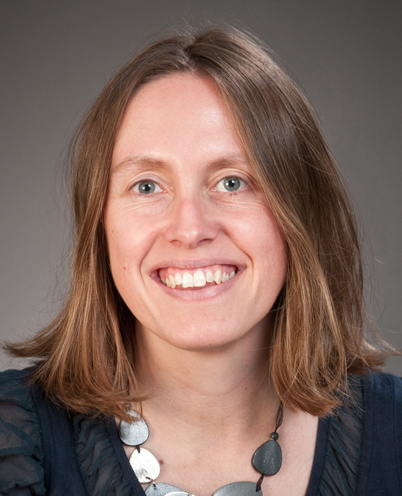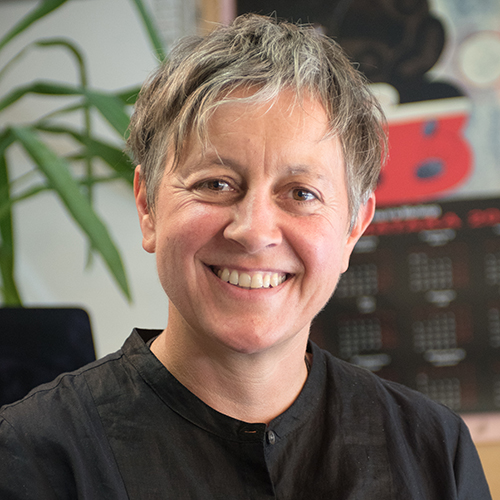Research projects
Learn about the research projects School of English, Film, Theatre, Media and Communication, and Art History staff are currently engaged in.

New Directions for Transnational High-End Drama in TV's 'Multiplatform' Era
Associate Professor Trisha Dunleavy is currently working on a project whose central interest is the new opportunities for cross-national and/or cross-platform collaboration between national TV networks and globally-minded ‘premium’ players such as HBO and Netflix, a development exemplified by current Italian-language drama serial, My Brilliant Friend (HBO/RAI).

Romantic literature and Indigenous Diplomacy
Associate Professor Nikki Hessell has been awarded a three-year Marsden Standard Grant to research the use of British Romantic poetry by Indigenous diplomats in the nineteenth century. The aim of the project is to examine the ways in which quoting and referencing British Romantic poetry helped Indigenous diplomats reach out to settler and imperial governments and publics. The Marsden Grant will fund research on treaties, proclamations, petitions, speeches and material objects alongside poetic content, as well as an international symposium in 2020. The research for this project informs Associate Professor Hessell’s Honours course, ENGL 429, in which students learn about the rich connections between Romanticism and indigeneity.
Miharo: Engaging young people through live performance
Dr Nicola Hyland's practice-based project focuses on the vitality of live, playfully performative, human interaction. Aimed at a young audience, the theatrical production Mīharo explores various notions of friendship as doing/being in a space together, in the form of a devised physical theatre performance. Through the interactive nature of this live form, the piece seeks to counter the lack of ‘feelingful’ human interaction inherent with digital contact, with a narrative focusing on the ‘wonder and magic’ of building and maintaining friendship through imaginative play.
The research methodology of this project connects ideas from critical pedagogical thinkers such as Paulo Friere with devised performance pedagogies; guided by the practical principles of international devising collective the Paperboats project and brand new discursive material on devising-as-decolonisation. This project is a collaboration between the VUW theatre programme, New Zealand theatre industry professionals and the U.S. based international collaboration, the Paperboats project.
The dramaturgy and research methodologies will draw ideas from Te Ao Māori to enhance the play’s central method; for instance, the value of kanohi ki te kanohi – or the seen face – to reinforce the importance of human-to-human contact, as well as whakawhānaungatanga from the perspective of non-filial relationships being as closely bonded as that of any family. Mīharo is a developmental work drawn from a series of international devised performances for children known as The Tutu Shows, arising from a germinating idea from Theatre for Young People (TYP) practitioner Dave Brown entitled Tw2o of a Kind. The first incarnation of this project in Aotearoa were two ensemble productions at VUW in 2017; In the Attic and Moonlight, led by PhD candidate Kerryn Palmer in collaboration with permanent staff of the VUW theatre programme. The research of this project also draws on findings in the monograph Nicola co-edited with Dr. James McKinnon and Dr Heather Fitzsimmons Frey, Why Devise – Devising and the Insitution (Intellect, 2021).
The conception phase of Mīharo has been developed in a series of workshops directed by Kerryn Palmer in collaboration with MFA (CP) students Emma Rattenbury and Tim Fraser over 2019. Kerryn’s ongoing research into Theatre for Young Audiences has been part of The PaperBoats Project; an international partnership platform for theatre-makers that investigates and pioneers’ new ways of connecting and creating theatrical works for children aged between 4-8. The early workshops of Mīharo have adopted The Paperboats Project’s concept of slow brewing; ´to get to the elegant simplicity we aspire to in producing extra-ordinary performance outcomes, the process must be given time …” (https://www.thepaperboats.com/). Kerryn, Emma and Tim first developed 14 modules and from that a 20-minute workshop performance that was presented to a trial audience of children.
Mīharo explores the wonder of friendship and the magic of imagination. Language-lean and using light and music to create wonder, Mīharo aims to delight and captivate children from 4-8 years old; encouraging them to use their imaginations in in the performance itself through adopting abstract and symbolic storytelling methods. The play invites the young audience to wholly embrace the magic of live performance and human technologies.

Hidden voices
This is just one question being asked by Associate Professor Sarah Ross as she nears the end of her three-year Marsden-funded project, Woe is Me: Women and Complaint in the English Renaissance.
The research explores what Sarah describes as ‘the literature of complaint’—the voices of woe, loss, and protest that make up one of the most powerful and ubiquitous modes in the English Renaissance. Although ‘female complaint’ is usually thought of as the voice of a lamenting woman, it has been largely understood as male-authored—an act of literary ventriloquism.
A key part of the project was the discovery by Sarah and her research team of a comprehensive body of previously unknown complaint poems written by Renaissance women. Sarah’s research explores, for the first time, these newly discovered complaint poems and seeks to produce a new account of how the voices of the disempowered, railing against their circumstances, helped to shape the literary and social cultures of the English Renaissance.
“I am curious about where ‘real’ women are in our cultural histories,” says Sarah. “The dominant view of literary history is predominantly a white male view, so in a broad sense my work is about finding and understanding the missing female voices of the past.”
A useful device for male writers during the period was to use women as figures of loss. “Poetry is populated by nymphs sitting and weeping on the banks of rivers, or singing like nightingales in gloomy forests,” says Sarah. “The great male writers often use women in their poetry as figures of vulnerability and heightened emotion, a way of expressing loss or disenfranchisement.
“Hamlet’s Ophelia gives us one kind of female voice from literature that is very dominant—violated, lamenting, going mad, and dying. She and Gertrude are there as Hamlet’s collateral—their woes show how badly things have gone wrong, not just for them, but for all of Denmark. And literature gives us endless versions of these women, lamenting their own losses, or lamenting the losses of their nation.”
But how do women writers pick up on this figure of the lamenting woman? What use is she to them? Do they use her; and if so, how do they (re)write her to find a place from which to speak?
“These are our guiding questions,” says Sarah. “Now that we’ve discovered this large body of writing by women, we’re in a phase of finding out how these women’s voices can change our view of our cultural and intellectual history. We must complicate and diversify the stories we tell about our past.”

Kai Ora: Food of Hope and Wellbeing
Associate Professor Jo Smith (Kāi Tahu, Kāti Māmoe, Waitaha) and Dr Jessica Hutchings (Ngāi Tahu, Gujarati) have received a Marsden grant for their research project which will investigate how kaupapa Māori approaches to food might transform what we eat, how we obtain it, and how we value it, particularly when imagining new food nation futures.
